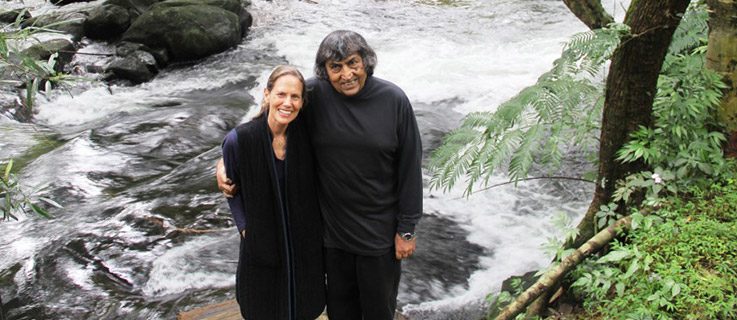In Kodagu, India, a couple has created a biodiversity haven. Over two decades, the Malhotras bought abandoned farmland and planted a rainforest to invite all kinds of animals into their sanctuary.
The soulful chirping of hornbills, kingfisher birds, and Paradise Flycatchers floods the air above a canopy of trees. Civet cats, lesser lories, leopards, Royal Bengal tigers and various other animal species – even rare, threatened ones – wander through the jungles. Petrichor floods the air as an early monsoon drizzle washes over leaves. Tucked into the Brahmagiri mountain range of the Western Ghats in Karnataka's Kodagu district, a rich variety of indigenous trees forms this 300 acre private sanctuary. And two decades ago, nearly all of it was wasteland.This vast rainforest that protects the hot-spot of biodiversity found in Kodagu was single-handedly crafted by two humans – but two humans who believe in minimal human interference. Pamela Malhotra and her husband Dr. Anil Malhotra purchased this space to let nature take its beautiful course, creating the Save Animals Initiative sanctuary. To further their conservation cause through educational outreach programs and presentations, the duo have also set up a non-profit charity, the Save Animals Initiative Sanctuary Trust.
Love, appreciation and a dream
Pamela grew up in New Jersey, USA, or as she says, back when it was "rural New Jersey", with a large number of wooded estates surrounding her, and a Native American mother who always encouraged her love for nature. For Dr. Anil Malhotra, appreciation for natural beauty came right from his childhood as he grew up in a valley in India’s Dehradoon at Doon School. "Nature is very expressive with its various species," he shares.
In 1986, Anil's father passed away. As the couple journeyed to Haridwar to spread his ashes, the expansive beauty of the mighty Himalayas stole their hearts. The fresh mountain air of the Uttar Kashi region beckoned, and the pair moved there from Hawaii for ten years. Eventually, they decided to build a sanctuary to protect the natural beauty and tried to purchase land, but in vain. Land Ceiling laws there allowed one family to own only twelve acres.
-
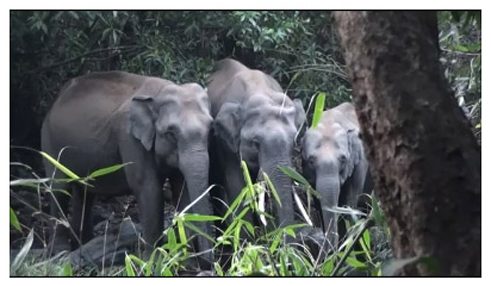 Photo: private
Photo: private
-
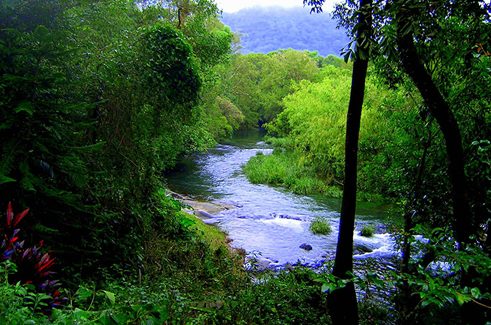 Photo: private
Photo: private
-
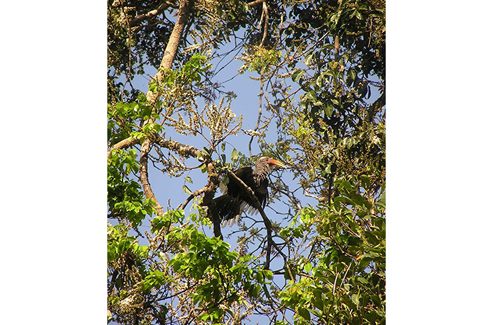 Photo: private
Photo: private
-
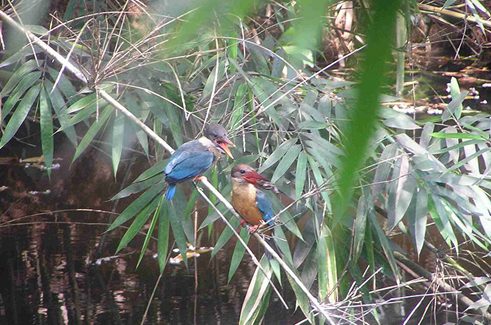 Photo: private
Photo: private
-
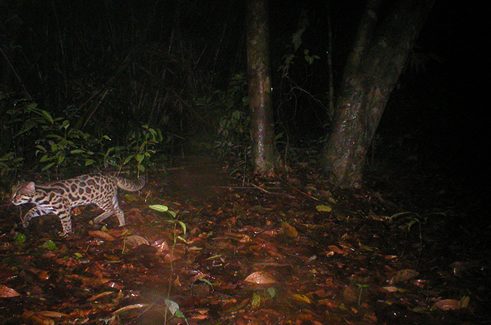 Photo: private
Photo: private
-
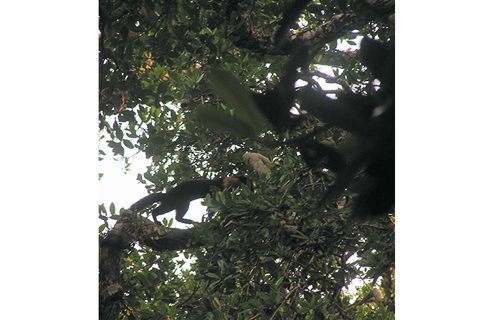 Photo: private
Photo: private
-
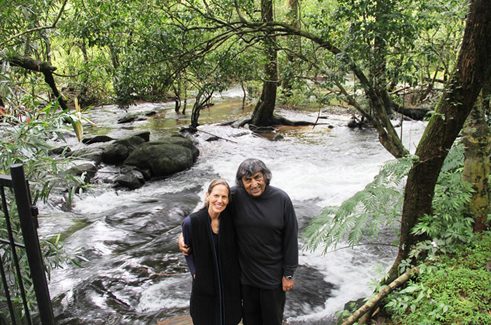 Photo: private
Photo: private
-
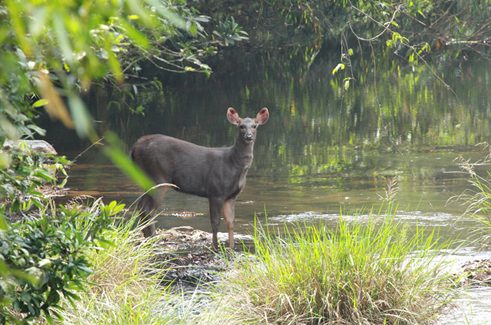 Photo: private
Photo: private
1991 saw Anil travel to the Indian states of Kerala, Tamil Nadu, Andhra Pradesh and even Goa in search of land to realise their sanctuary dream, and he finally found what he was looking for in Karnataka. "If a piece of land has been deemed as a plantation and has a coffee or cardamom certificate, it doesn't fall under the Land Ceiling Act," explains Pamela.
No financial fruit, but a biodiversity haven
In Kodagu, they met a man named Subaya who owned 55 acres that were on the verge of being foreclosed. Consistent heavy rainfall in the area had made crop growth very difficult, and his land bore no financial fruit, causing him to default on bank loans. Anil negotiated the deal and bought the entire 55 acres, and the proceeds settled Subaya's debt. Through the next decade, Pamela and Anil bought several pieces of denuded land that couldn't grow crops due to high levels of rainfall and had been abandoned by farmers. While the first investment came from the couple personally, the purchases and caretaking to follow drew funds from the Sanctuary Trust, which is registered in the United States and receives donations to keep the beautiful, lush nature alive.From deforested expanses to shrub-covered areas with birds and small mammals, to land carrying water-guzzling cardamom crop, they purchased a wide range of what was considered to be "wasteland" by previous owners, and slowly turned it into a rich, lush biodiversity haven. And living within that haven has its perks.
"They're very endangered," starts Pamela, referring to the small-clawed river otter. One day, as Anil and her were sitting on two rocks in the middle of the river flowing through the sanctuary, a tiny otter head popped out of the water. This otter is usually found in bigger river systems, and is often hunted for its pelts or caught in fishermen's nets, making it a rather wary animal. Since the duo knew it as such, they were thrilled by the rare spotting.
A few seconds later the head popped back underwater, and the couple smiled at the wonderful sighting. Suddenly, the head reappeared, this time with another otter. The animals stared at the Malhotras for a few seconds, then climbed out of the river and ambled towards a thicket of trees. Pamela describes how the otters seemed like they were having an emphatic conversation before scurrying back underwater. Since the sanctuary is maintained in the spirit of limited human interference, Pamela and Anil are the only two who experience these gifts of nature on a regular basis, with the help of locals and their vast knowledge of conservation. Besides that, they do share these privileges with others on a temporary basis in the form of eco-cottages where guests can stay.
Patiently learning from nature
While bird sightings, tiger run-ins, and otter hangout sessions seem wonderful, creating this 300 acre sanctuary was not an easy feat, and took decades of patience and learning. Pamela describes inaccessibility as one of the biggest challenges they faced, "There are no metal or tar roads. In the monsoon, some roads turn into mud rivers. We even helped the local community assemble new roads." The immensely complex legal maze to acquire wetlands and plantation lands was another task, where No Objection certificates were required from the entire family of land owners, which sometimes amounted to 50 individuals.
From locals' expertise, advice from NGOs, researchers and extensive reading, the nature-loving couple has gained enough knowledge to transplant, uproot and replant, grow saplings and piece by piece, build the SAI sanctuary. "The best teacher is nature herself," we learn. Pamela illustrates this by pulling an incident from December of 2013 out of her memory. She reminisces, "It was like a Christmas gift." Pamela and Anil were sitting outside their home in the sanctuary when suddenly, a herd of Asian elephants emerged with their calves in tow. The beautiful, massive animals naturally shared the evening with the couple, staying for about an hour. "They trusted us with close proximity," Pamela adds cheerfully, "They can't speak our language, but they read our vibes. They feel love, peace and calm from us, and mirror that back to us. It's a privilege." The couple's personal decision to not have children makes the entire sanctuary their off-spring. With no one to inherit the 300 acres, the duo ensured the long-term survival of the sanctuary when they registered their life’s work as a non-profit charity in 2002. "We have no human children, but plenty of animal children!" Pamela laughs.
